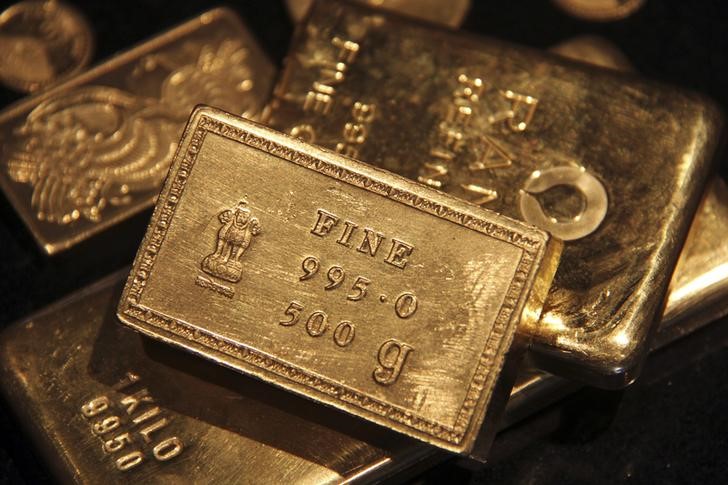By Barani Krishnan
Investing.com -- Gold settled at its highest in 13 months on Wednesday as investment dollars continued to pour into the metal from those seeking a hedge against inflation and from geopolitical tensions stirred by the Russia-Ukraine crisis.
“The gold trade is an easy one right now as geopolitical tensions will continue to drive inflationary pressures to the next level, which will feed into aggressive Fed tightening calls that will threaten financial conditions and ultimately economic growth,” Ed Moya of online trading platform OANDA wrote in his daily markets commentary.
“Gold is still respecting the $1,920 level for now,” Moya added, referring to the current resistance, “but a break could see an easy path towards the $1,950 region."
Gold’s most active contract on New York’s Comex, April, settled up $3, or 0.2% at $1,910.40 an ounce. While the move on the day was marginal, it was the highest settlement for a benchmark Comex gold contract since Jan. 7, 2021, when it closed at $1,935.50.
Gold prices have taken off in recent weeks from the combination of runaway inflation and fears about the impact of U.S. and other Western sanctions on Russia for its “backdoor invasion” of Ukraine.
President Joe Biden announced on Wednesday that his administration would impose additional sanctions on Russia’s Nord Stream 2 AG gas pipeline project to Germany, on top of earlier measures targeting two Russian banks, Russian elites and their family members and Russia's sovereign debt. Those sanctions came after Russia’s parliament on Tuesday approved troops for what was described as “peacekeeping operations” in the two breakaway regions in eastern Ukraine that Moscow formally endorsed on Tuesday.
On the inflation front, the U.S. Consumer Price Index expanded by 7.0% in the year to December, its most since 1982.
The U.S. economy, in comparison, grew by 5.7 percent in 2021, its fastest since 1984, from a 3.5% contraction in 2020 caused by the coronavirus pandemic.
The Federal Reserve slashed interest rates to almost zero after the outbreak of the coronavirus pandemic in March 2020. It is expected to resort to a series of rate hikes this year to counter inflation.
